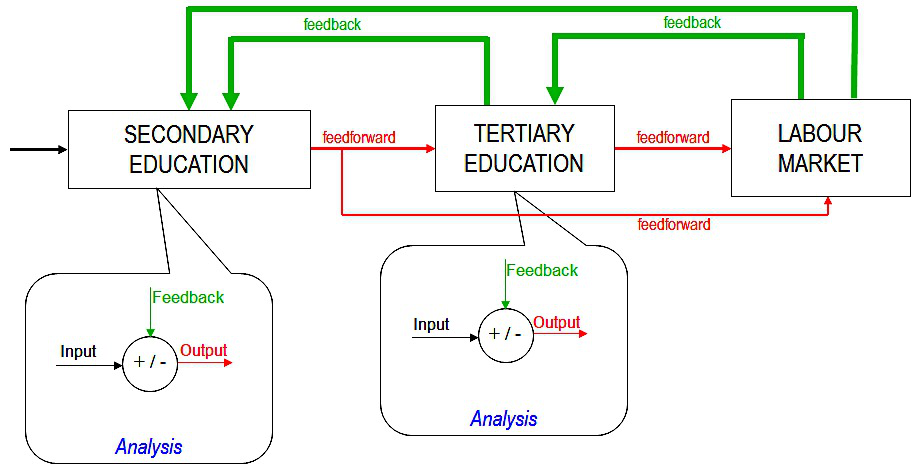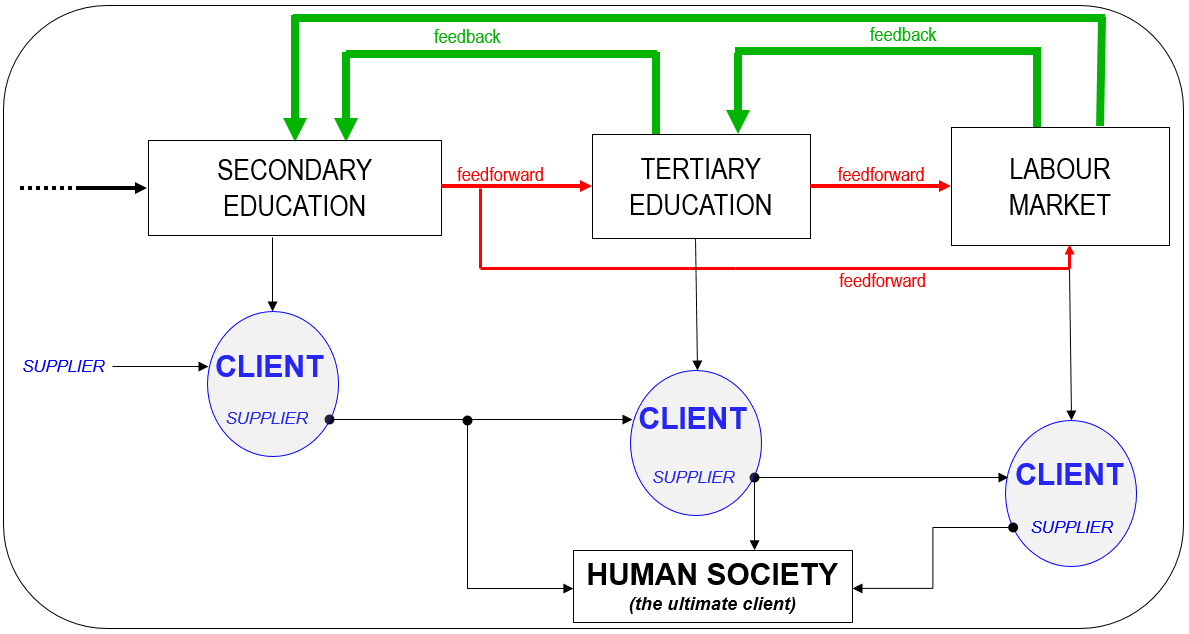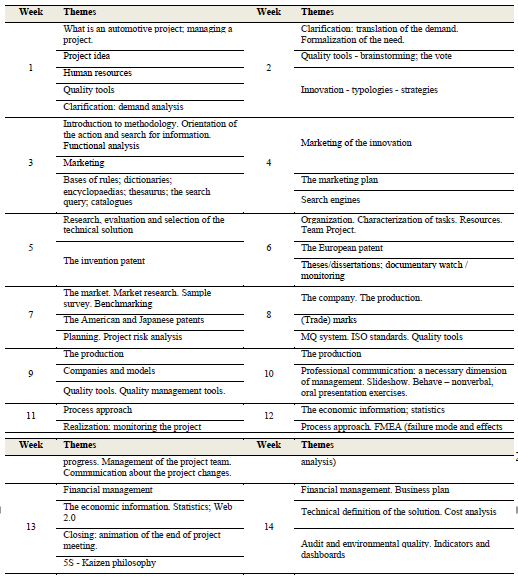Abstract
Today, perhaps more than in the past, we think that the question for the trinomial “academia-industrystate” is: are the graduate engineers “fit for purpose” and capable of operating in an industry that needs multi- and inter-disciplinary skills? In other words, is there a gap between industry needs for multi-skilled engineers and the current supply of graduate engineers? If so, then what should be done for reducing this gap? This being the context, the paper discusses the current stakes for the educational institutions and presents an approach which is currently implemented at University of Pitesti in a Master programme developed with Renault Romania. Thus, our combined effort was to design an academic curriculum “fit for this purpose”, i.e., frequently employing the teamwork in multi- and inter-disciplinary project-based learning. A full semester was dedicated to transversal disciplines, which should help students to be up to the industrial task. Another semester (the last one) was entirely dedicated to practical periods or internships held in industry or research labs. Equally, involving as often as possible direct interaction between the students and local and international industry specialists was another goal of our common enterprise. All this will be thoroughly presented and discussed in our paper, the final goal being to exchange information on this topic which we think should be currently regarded as one of paramount importance. It’s our belief that universities are challenged. It is about the challenge to produce useful graduates for industry, featuring short periods to reach the autonomy target.
Keywords: Automotive engineeringfit for purposeproject-based learningclosed-loop system
Introduction
Over the years, the automotive community accomplished many remarkable technical
achievements. Certainly, all this was possible thanks to a very qualified human resource.
Nowadays, the rhythm of technical changes happening in the industry appears to exceed the
possibilities of many educational institutions to cope/keep up with. One obvious conclusion would be that
the gap between industry needs for multi-skilled engineers and the current supply of graduate engineers is
widening. Moreover, as argued by (Slavnich, 2015), as current engineers grow older, fresh and young
minds are not coming through the system fast enough.
Therefore, on the one hand, the universities are challenged to produce useful graduates for the
industry, featuring short periods to reach the autonomy target. On the other hand, the whole society is
challenged, as well, because in many countries what is usually known as STEM (Science, Technology,
Engineering and Mathematics) went out of fashion in the favor of more accessible degrees such as for
instance economical and juridical sciences, media and photography etc. Perhaps, as indicated by
(Fieldhouse, 2012), currently, STEM is publicly perceived as being too hard and not that financially
rewarding over the whole lifetime. Thus, something has to be done at the level of the society in order to
increase the interest of young pupils for STEM (e.g. promoting the social value of engineering).
Concerning the first issue, let’s analyze the involved characters and try to establish a clear way of
working so that the target to produce useful graduates for the industry can be achieved. Figure
what we think should be the goal of every system: a dynamic system, featuring closed loop control.

The knowledge based society should be truly organized as an integrated system working in closed
loop control. In other words,
think not that easy to make it really working at the level of human society. What is ironic is that we are
able to make complex mechanical & electrical & intelligent systems working as explained before, so that
the setpoint/target to be truly achieved and sometimes, we are failing when it comes to apply the same
principle to us, humans.
Moreover, what makes really difficult the optimization of the educational system’s operation is the
fact that every modification in the system can only be analyzed after one full cycle of study. In other words, if we simplify the analysis by refereeing only to the bachelor degree from the higher or tertiary
education, the assessment of the added value of the implemented modification can only be performed after the
completion of the studies, which is usually done in 3 or 4 years. Then, another modification can be issued
according to the result of the analysis, and so on.
Taking into account this particular aspect, one should understand that when there is a desire of change
in the educational system,
of a thorough analysis of the whole integrated system (education + labor market = whole society) then time
would be lost without achieving the goal and the inherent negative effects will be really hard to diminish in
time and space.
In order to go even deeper with our analysis, this integrated system we are talking about should be
organized to follow the operation logic of
satisfaction.

As seen from figure
supplier. Therefore, one chance to positively resolve this system is to intensify the need for satisfaction from
each client, which certainly cannot be achieved without continuous feedback throughout the whole system. In
the end, the winner (
These general considerations were introduced in order to underline that the change which is expected in
the field of engineering education should be the result of an efficient dialogue between academia, industry and
in a significant way since quite some time. Certainly, the situation may differ in each country. However, as
discussed by (Omar, 2013), there is a general acceptance that the engineering education should suffer important
updates, such as for instance not only focusing on acquiring facts but also on developing skills. According to
(Finegold, 2016),
Therefore, problem-solving skills, critical thinking skills, teamwork and project management skills (including
international communication and collaboration skills) are the ones which should be the goal of every
engineering educational system. In order to really encourage the development of such skills, some actions may
be needed at the level of academic curricula. For example, creating a curriculum which includes
With such an approach, the above mentioned skills could be developed efficiently. Obviously, this cannot be
applied in the educational system without being first undertaken by the faculty staff. This means that first an
important shift in professors thinking should occur. Then, some other measures should be put in action in order
to increase faculty expertise in professional practice and here the industry and government might help. As
mentioned before, if targeting the improvement of the educational system aiming to bridge the gap between the
industry needs and the current supply of fresh/young engineers, there has to be a
any intervention in the educational system. Government should also be involved as it is about the development
of the whole society.
Project-Based Learning. A Case Study from the University of Pitești
Renault Technologie Roumanie (RTR) which is a unique client of the educational institutions in
Romania decided to step in and to bring its contribution to the improvement of fresh engineers’ quality.
Their internal training entitled “Engineering of the Automotive Projects” developed in 2007 in
collaboration with the Technological University of Compiègne, France (UTC), was transformed in 2009 into
an ARACIS (Romanian Agency for Quality in Higher Education) Certified Master Programme, available in 4
Romanian universities, amongst them, University of Pitești. This Master programme is entitled “
and Management of the Automotive Design(CMPA – in Romanian)” and was meant to include the project-
based learning approach. The teaching paradigm applied within the frame of this Master programme satisfies
the needs of the automotive engineering education to embrace
industry’s requirements. When deciding to implement the project-based learning into this Master programme,
we establish as a general rule that professors have to set-up a learning environment where open and honest
discussion is encouraged. Dialogue with students should continue after the courses by using current
communication techniques (email and social media).
This Master’s curriculum combines
practical training. Moreover, in order to make this Master programme more efficient, recognized specialists
from the local and international industry are involved in the courses, giving focused lectures and presenting
case studies from real life. Thus, students come in a direct contact with the industry with the derived
advantages. In short, they interact also with the ones who actually do projects in the industry or real life and not
only with the ones who speaks about how things are done in real life.
engineering topics such as: automotive computer aided design, vehicle dynamics, modern automotive
manufacturing and materials, regulations and standards in automotive engineering, advanced powertrains and
drivelines, ergonomics and comfortability of automobiles, numerical methods. Their purpose is to provide the
students with in-depth knowledge of the automotive engineering so that they can be technically able to develop
their own projects in the second year of study. The teaching method is based on intellectual challenge.
Encouraging the debates on specific subjects is also a key point of the teaching method. The professor’s role is
to provoke, guide and provide feedback so that students can find the solution/answer by themselves. Thus, the
professor’s role is to mentor rather than defining the problem statement and project boundaries.
ability to work in groups,
innovation potential,
cost control,
time and performance. The method used in order to “force” the achievement of this third semester’s goal relies on dividing the
students in workgroups, each one undertaking a “

In
(OEM and/or OEM’s suppliers) or within research labs (academic ones, included). The idea is to make things
more realistic in this final semester of study. Approaching more concrete case studies than before with the
associated challenges and trade-offs can only contribute positively to the final goal of creating a graduate
engineer “
On this matter, our particular problem is that the local industry is not too developed so that to absorb the entire
population of students.
Some of the
- Dacia Duster – Mobile Office/Bureau Mobile:
o It is one of the most prominent projects realized in cooperation with RTR,
o It is the result of the involvement of 23 tutored students from all the universities working with RTR
on the Master programme under discussion,
o These 23 trainees integrated in a 4-month internship in RTR covered all stages of developing a
product, starting with numerical prototyping and ending with physical prototyping (fig. 3)

- Ecologic Vehicle by Intake Throttle-less Actuation (EcoVITA):
o It consisted in the integration into a Dacia Logan vehicle of an original spark ignition engine
prototype featuring variable intake valve lift (ViVL) developed at the University of Pitești (fig. 4)

- Developing an anti-phase working windshield wipers for Dacia Logan car
o Numerical prototype was developed and validated (fig. 5)
o Physical prototype is in progress

- EcoDriving:
o The goal was to develop a gear shifting indicator so that the driver can adapt the driving style in
order to minimize fuel consumption (fig. 6)

- Transforming a Dacia Logan car passenger in a cargo vehicle:
o The project started from the usual Dacia Logan car, featuring 3 volumes and the goal was to obtain
a hatchback type cargo vehicle (fig. 7)

as described before. Being convinced about the usefulness of this learning approach, for the students from
license/bachelor level, we launched an optional project entitled
fruit of an efficient cooperation with Université de Bourgogne, Institut Supérieur de l’Automobile et des
Transports (ISAT) de Nevers, France (fig. 8).

KLC is truly a project well defined from technical, financial and duration point of view. In short, it is
about developing of a go-kart over one academic year (starting from the idea and ending with an operational
prototype), whose cost is not to exceed 2000 Euro (for thermal ones) or 3000 (for electric ones, excluding the
batteries), aiming to participating in month of May to a motor-sport academic competition. Consequently, it is
not just a simple go-karting race. Equally, it is a technological, educational and human challenge and the
winner is not necessarily the fastest! By summarizing, the goal of this competition is to prepare future
engineers for project management by developing the teamwork spirit, sharing responsibilities, respecting
deadlines and allocated budget; finally, it aims to develop the synthesis and compromise capabilities in respect
to the initial imposed constrains. This year, our competition reached its sixth edition and was organized in
Romania. Next edition will be held in Nevers Magny Cours, France.
Conclusions
The paper discussed about the need of some important changes in the present engineering education.
Particularly, the paper underlined the need of having a dynamic educational system which
industry requirements without compromising the basic needs of traditional engineering education. One of the
methods to produce what in this paper is called
Programme developed in cooperation with Renault Technologie Roumanie, which was designed to provide to
our students, hands-on experience in designing, producing and validating technical solutions for vehicles.
Future efforts should be focused on continuously improving this Master programme and to extend the concept
to other programmes of study.
Acknowledgements
The authors would like to express their gratitude to Renault Technologie Roumanie for their
involvement in our enterprise to obtain graduate engineers “fit for purpose”. We would also like to thank
Mr. Ernest Galindo from ISAT de Nevers, the author of the Challenge Kart Low Cost with whom we
developed a very good connection on the education of automotive students.
References
- Slavnich, D. (2015). University challenged, Engine Technology International, 48-49, http://viewer.zmags.com/publication/7cb33b23#/7cb33b23/48.
- Fieldhouse, J. (2012). The Global Education of Automotive Engineers to Satisfy the Demands of a Global Industry. Can this ever become a reality?, SIAR’s Journal of Automotive Engineering, vol.6, no. 4, 6-10, http://www.ingineria-automobilului.ro/reviste/Ingineria_25_en.pdf Omar, M. (2013). The development of the global automotive engineer, a case study from the Clemson University International Center for Automotive Research, American Society for Engineering Education (ASEE) International Forum, Paper ID#8303 Finegold, P. (2016). Big ideas: The future of engineering in schools,Institution of Mechanical Engineers and Royal Academy of Engineers UK, http://www.imeche.org/policy-and-press/reports/detail/big-ideas-report-the- future-of-engineering-in-schools
Copyright information

This work is licensed under a Creative Commons Attribution-NonCommercial-NoDerivatives 4.0 International License.
About this article
Publication Date
25 May 2017
Article Doi
eBook ISBN
978-1-80296-022-8
Publisher
Future Academy
Volume
23
Print ISBN (optional)
-
Edition Number
1st Edition
Pages
1-2032
Subjects
Educational strategies, educational policy, organization of education, management of education, teacher, teacher training
Cite this article as:
Clenci, A., Niculescu, R., & Zaharia, C. (2017). On The Education Of The Automotive Engineer Through Project-Based Approach. In E. Soare, & C. Langa (Eds.), Education Facing Contemporary World Issues, vol 23. European Proceedings of Social and Behavioural Sciences (pp. 1289-1297). Future Academy. https://doi.org/10.15405/epsbs.2017.05.02.158

